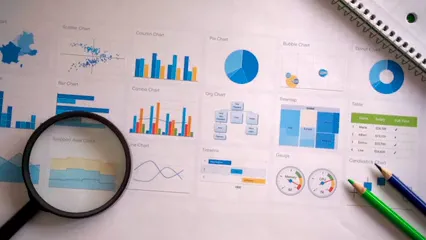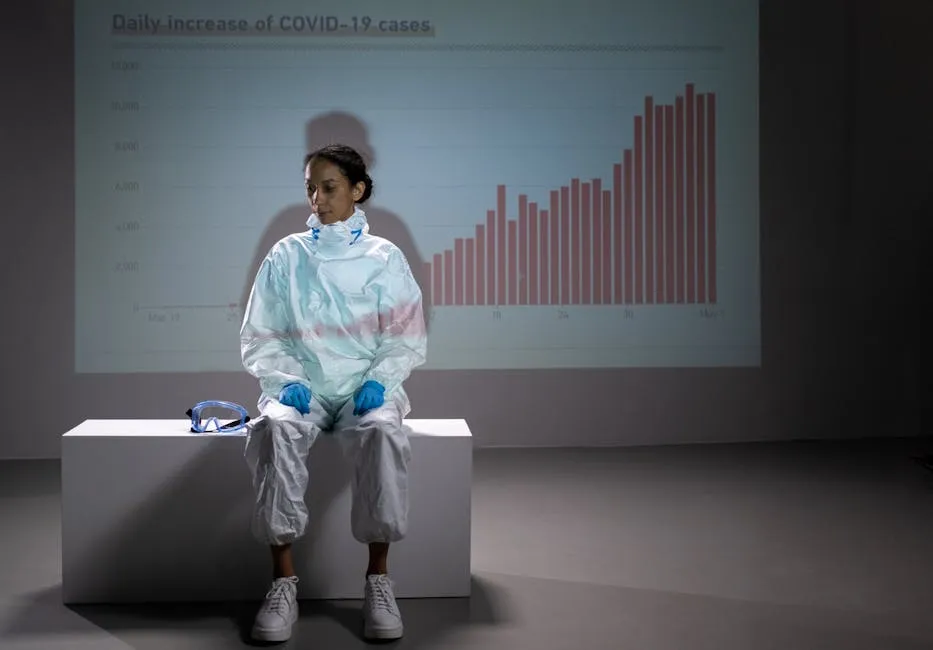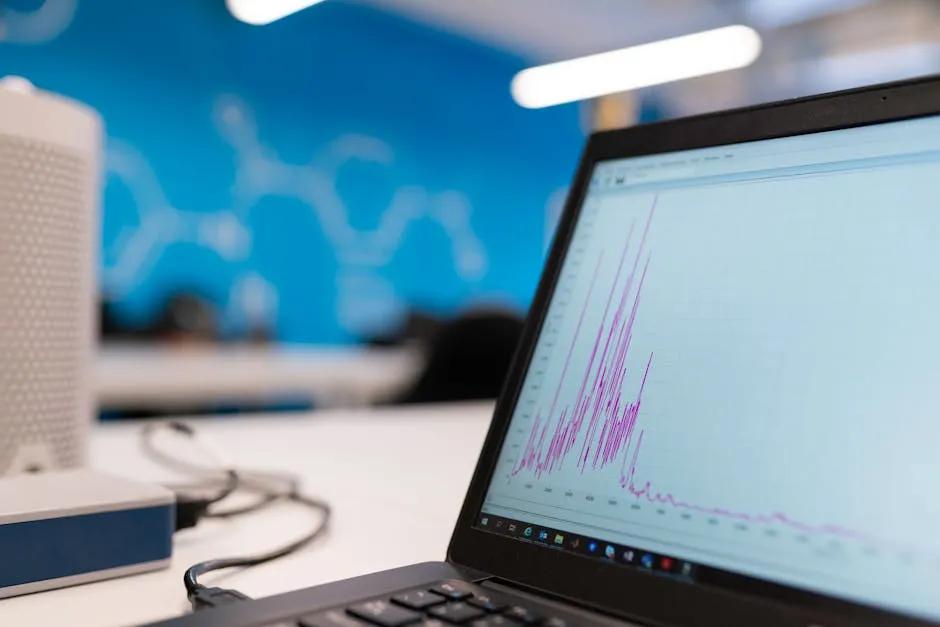Introduction
In today’s world, data reigns supreme. An MS in Statistics equips graduates with essential skills to thrive in this data-driven age. It’s no surprise that the demand for statisticians has skyrocketed. Businesses across various sectors are on the lookout for professionals who can transform raw data into actionable insights.
With a master’s degree in statistics, graduates can explore a wide range of job opportunities. From data analysis to market research, the options are nearly limitless. Statisticians are the unsung heroes behind the curtain, directing the spotlight on data to help companies make informed decisions.
Industries are not just dabbling in data; they are diving headfirst into it. Healthcare, finance, technology, and beyond are craving data-savvy professionals. This growing demand means that having a master’s degree in statistics is more than just a feather in your cap—it’s a golden ticket to a flourishing career. If you’re looking to get a solid foundation in data science, consider picking up a copy of R Programming for Data Science. This book is a fantastic resource for anyone eager to dive into the world of data analysis!
This post aims to explore the various career paths available to MS Statistics graduates. We’ll cover salaries, required skills, and practical tips for landing your dream job. Whether you’re a fresh graduate or seasoned professional, this guide will illuminate the exciting world of MS Statistics jobs.

For those interested in the foundational aspects of statistics, an introduction to statistical learning with Python is a great resource.
The Value of a Master’s in Statistics
Importance of Statistics in Today’s Economy
Statistics is the backbone of modern business decision-making. Companies rely on data analytics to steer their strategies and optimize performance. The importance of statistics has never been clearer. Take healthcare, for instance. Statisticians analyze clinical trial data, helping researchers determine the effectiveness of new treatments. This direct impact on people’s lives showcases the power of statistics.
In the finance sector, analysts employ statistical methods to assess risks and forecast market trends. Whether predicting stock prices or evaluating investment opportunities, statistics is crucial. The tech industry also benefits immensely, using data to enhance user experiences and develop innovative products.
From shaping public policy to improving business operations, statistics plays a vital role across multiple industries. As organizations increasingly turn to data-driven solutions, the demand for skilled professionals with a master’s in statistics continues to soar. This degree lays a solid foundation for a successful career, no matter the sector you choose. Don’t forget to check out Data Science for Business for a deeper understanding of how data science can drive business decisions!
With a master’s in statistics, you’re not just crunching numbers—you’re making a meaningful impact in an ever-evolving economy.

Benefits of an MS in Statistics
Pursuing a Master’s in Statistics opens a treasure chest of benefits. First and foremost, graduates enjoy higher earning potential. Statisticians and data professionals often find themselves with fat paychecks that would make anyone’s wallet smile. The median salary for statisticians is around $96,280, while data scientists can rake in an average of $100,910. Who wouldn’t want to trade in ramen noodles for a gourmet dinner?
Job security is another enticing perk. As industries increasingly depend on data, the demand for statisticians is set to keep rising. It’s like having a VIP pass to a concert—everyone wants you to be there!
The ability to specialize in various fields is a cherry on top. From finance to healthcare, the options are abundant. You can choose a path that excites you or one that aligns with your passions. How about becoming a biostatistician? You could help develop life-saving medical treatments. Or why not venture into the realm of market research? You’d be the mastermind behind the next big advertising campaign! If you’re interested in diving deeper into the world of market research, grab a copy of The Data Science Handbook for insights on how to excel!
Lastly, let’s not forget about the flexibility in career paths. An MS in Statistics allows graduates to explore academia, work in corporate settings, or even serve in government roles. Want to teach the next generation of data whizzes? Academia is your stage! Prefer the fast-paced corporate world? Companies are constantly on the lookout for data-savvy minds. Or perhaps government roles pique your interest? Public service needs skilled statisticians to analyze data that can shape policies and improve lives. With an MS in Statistics, the world is truly your oyster.

Career Paths for MS Statistics Graduates
Traditional Roles
Statistician
Statisticians are like data detectives. They collect and analyze numerical data to help organizations make informed decisions. Their responsibilities include designing experiments, conducting surveys, and interpreting results. The skills needed for this career include strong analytical capabilities, proficiency in statistical software, and excellent communication skills. The median salary for statisticians is around $96,280, with growth projected at 31% by 2031. Talk about a promising career!

Data Scientist
Data scientists are the wizards of the data world. They extract valuable insights from massive datasets using advanced techniques. Proficiency in programming languages like Python and SQL is essential. With a knack for machine learning and statistical modeling, data scientists make sense of complex information. The average salary for data scientists hovers around $100,910, with an impressive job growth rate of 36% expected. If you enjoy solving puzzles, this role is for you! To get started, check out Python for Data Analysis—a great resource for mastering Python!
For those looking to enhance their skills, practical statistics for data scientists is an excellent guide.
Data Analyst
Data analysts are the bridge between raw data and strategic decisions. They interpret data to provide actionable insights, often translating complex findings into easy-to-understand reports for non-technical stakeholders. Skills in data visualization tools and statistical analysis are crucial. The median salary for data analysts is approximately $82,360, with a job growth rate of 23%. If you enjoy storytelling with numbers, a data analyst role could be your calling! If you’re interested in data visualization, consider Data Visualization: A Practical Introduction for insights on creating impactful visualizations!
These traditional roles set the foundation for a successful career in statistics, with numerous opportunities to specialize further or branch out into emerging fields. Each path offers engaging challenges and the chance to make a substantial impact in various industries.

Specialized Roles
Biostatistician
Biostatisticians play a vital role in healthcare and research. They analyze data from clinical trials, helping to assess the effectiveness of treatments. This role requires a strong foundation in statistical methods and a keen understanding of biological sciences. Salary expectations for biostatisticians hover around $104,110 annually, with a promising job outlook. The demand for these professionals is projected to grow as healthcare continues to rely on data for decision-making. If you love numbers and want to impact public health, this might be your dream job! You might also find The Elements of Statistical Learning a valuable read!

Actuary
An actuary is a professional who uses mathematics, statistics, and financial theory to study uncertain future events, primarily in insurance and finance. To become an actuary, candidates typically need to pass a series of rigorous exams and obtain credentials from recognized professional bodies. The average salary for an actuary is approximately $105,900, with top earners exceeding $250,000. The job outlook for actuaries is bright, with a projected growth of 21% as companies seek to manage risk effectively. If you’re a numbers enthusiast who enjoys problem-solving, consider this rewarding career. You might want to check out A First Course in Statistical Programming with R for more statistical insights!
Market Research Analyst
Market research analysts are the detectives of the business world. They gather and analyze data about consumers and competitors to help companies understand market trends and customer preferences. Skills required for this role include strong analytical abilities, proficiency in data analysis software, and excellent communication skills. The median salary for market research analysts is around $74,680, with a job outlook of 13% growth through 2030. If you’re curious about consumer behavior and love data, this could be the perfect fit for you!

Emerging Fields
Data Engineer
Data engineers are the architects of data infrastructure. They design and build systems that store, manage, and analyze data. Key skills include programming proficiency in languages like Python and SQL, as well as knowledge of data warehousing solutions. The salary prospects for data engineers are promising, with averages reaching around $141,500. As businesses increasingly rely on data for insights, the demand for data engineers is expected to rise significantly. If you enjoy building and optimizing data systems, this role could be your calling. For more on data engineering, The Data Warehouse Toolkit can be a great resource!

Sports Statistical Analyst
Sports statistical analysts use data to enhance team performance and inform strategic decisions. They analyze player statistics, game trends, and other performance indicators to help teams win. This role requires strong analytical skills and a passion for sports. Salary expectations for sports statistical analysts vary, but they often align closely with those of statisticians, around $104,860 on average. With the increasing focus on analytics in sports, this field is growing rapidly, offering exciting opportunities for those who love data and athletics.

Quantitative Researcher
Quantitative researchers work primarily in finance and academia, focusing on developing mathematical models to inform investment strategies and conduct empirical research. Responsibilities include analyzing large datasets and creating algorithms to predict market trends. The salary for quantitative researchers can be quite lucrative, often exceeding $100,000, depending on experience and location. With a strong job outlook, this field is ideal for those who excel in mathematics and enjoy tackling complex problems. If numbers are your passion, consider jumping into this fast-paced, rewarding career! Check out The Signal and the Noise for insights into predictions!

Skills Required for Success in MS Statistics Jobs
Technical Skills
In the realm of statistics, technical prowess is non-negotiable. Proficiency in statistical software is akin to having a Swiss Army knife in a data analyst’s toolkit. R, SAS, and SPSS are essential tools that statisticians rely on daily. Each software has its unique strengths. For instance, R shines in statistical computing and graphics, while SAS is a powerhouse for advanced analytics and business intelligence. SPSS, on the other hand, is user-friendly, making it a favorite among those who prefer straightforward data analysis. If you’re looking for a solid introduction to R, R in Action is a great resource!

But wait, there’s more! Programming skills are the cherry on top. Python and SQL are indispensable in this field. Python offers flexibility and a treasure trove of libraries for data manipulation and analysis, while SQL is the go-to for managing databases. Want to extract meaningful insights from a mountain of data? Knowing how to write efficient SQL queries is crucial.
Data visualization tools are also essential in this skill set. Tools like Tableau and Power BI can transform dull data into compelling visual stories. Remember, a picture is worth a thousand numbers! Visualizations help stakeholders grasp complex findings quickly and make informed decisions. If you want to dive deeper into data visualization, grab Tableau Desktop Cookbook for practical insights!
In summary, a solid foundation in statistical software and programming, along with skills in data visualization, is vital for anyone looking to thrive in MS Statistics jobs.

Soft Skills
While technical skills are critical, soft skills are what truly set candidates apart. Communication tops the list. Statisticians must convey complex ideas clearly to diverse audiences. Whether presenting to fellow data nerds or non-technical stakeholders, the ability to articulate findings is essential.
Critical thinking is another cornerstone of success. Statisticians face real-world problems that require innovative solutions. Analyzing data is just the beginning; they must also interpret results and determine the next steps. This often involves considering various factors and potential implications, making strong critical thinking skills paramount.
Problem-solving abilities? Absolutely! Statisticians frequently encounter unexpected challenges. The ability to adapt and devise solutions on the fly is crucial.
Lastly, teamwork plays a significant role. Collaborating with professionals from various backgrounds, including IT, marketing, and finance, is common. The ability to work harmoniously with others fosters a productive environment and leads to more insightful outcomes.
In conclusion, while technical skills are essential in MS Statistics jobs, soft skills like communication, critical thinking, problem-solving, and teamwork are what pave the way for long-term success.

Professional Development
Professional development is the secret sauce for a thriving career in statistics. Internships are invaluable. They provide hands-on experience and a taste of real-world applications. It’s not just about theory; it’s about putting knowledge into practice. Internships also help build a robust professional network, opening doors to future job opportunities.
Networking is equally important. Attending industry conferences, joining professional organizations, and connecting with peers can lead to unexpected opportunities. Engaging with organizations like the American Statistical Association can provide access to resources, mentorship, and job postings.
Certifications can also boost your resume. Credentials such as the Certified Analytics Professional (CAP) or SAS Certified Data Scientist can enhance credibility and demonstrate expertise to potential employers. These certifications often require passing exams and proving practical experience, making them a valuable addition to any statistics professional’s toolkit. For an excellent introduction to statistical methods, consider Practical Statistics for Data Scientists!
In summary, pursuing internships, actively networking, and obtaining relevant certifications are crucial steps toward professional development in the field of statistics. These efforts not only enhance skills but also expand career opportunities.

Tips for Landing a Job with an MS in Statistics
Building a Strong Resume and Portfolio
Crafting a stellar resume is your ticket to landing a job with an MS in Statistics. First, tailor your resume for each application. Highlight relevant skills, experiences, and projects that align with the job description. Use action verbs and quantify achievements where possible. Did you analyze data that improved a process? Mention it!
Your portfolio is equally important. Showcase projects that demonstrate your technical skills and problem-solving abilities. Include visualizations, analyses, and any significant insights you derived. If you worked on a team project, highlight your specific contributions.
Don’t forget about your online presence! Maintain an updated LinkedIn profile that reflects your skills and experiences. Engage with industry-related content and connect with professionals in your field. Your online presence can often be a deciding factor for potential employers.
In a nutshell, a strong resume and portfolio tailored to the job you’re applying for, alongside a polished online presence, will significantly increase your chances of landing that coveted position in statistics.

Networking and Job Search Strategies
Networking is crucial for landing a job with an MS in Statistics. It’s not just about who you know; it’s about who knows you! Attend industry conferences, workshops, and seminars to meet professionals. They often share job leads and insights that aren’t posted online. This personal touch can make a world of difference.
Online job portals are your best friends! Websites like LinkedIn, Glassdoor, and Indeed regularly update job listings. Set up alerts for positions that match your skills and interests. Don’t forget to polish your profile. A well-crafted LinkedIn page showcases your expertise and makes you more appealing to recruiters.
Informational interviews are another excellent strategy. Reach out to professionals in your desired field. Ask them about their career paths, the skills they use, and what they look for in candidates. This not only expands your network but also provides invaluable insights into the industry. Plus, who doesn’t love chatting about their job?
Preparing for Interviews
Interviews can be nerve-wracking. But with the right preparation, you can ace them! Common questions often include, “What statistical software are you familiar with?” or “Can you explain a complex analysis you conducted?” Practice your answers. Use specific examples from your experience to illustrate your skills.
When discussing your statistical work, focus on the impact. Instead of just explaining what you did, talk about the results. Did your analysis lead to cost savings? Share those metrics!
Also, be ready to present data visually. Bring samples of your work, like reports or visualizations, to showcase your abilities. This not only demonstrates your skills but also your passion for statistics. If you want to ace your interviews, consider brushing up with Excel Data Analysis: Your visual blueprint for creating and analyzing data to sharpen your skills!
FAQs
What types of jobs can I get with a Master’s in Statistics?
With a Master’s in Statistics, you can pursue various roles, including: Statistician, Data Scientist, Data Analyst, Biostatistician, Actuary, Market Research Analyst, Operations Research Analyst, Sports Statistical Analyst, Quantitative Researcher, Financial Analyst.
What is the average salary for jobs requiring an MS in Statistics?
Salaries can vary widely depending on the role and industry. Here are some averages: Statistician: $96,280, Data Scientist: $100,910, Data Analyst: $82,360, Biostatistician: $104,110, Actuary: $105,900. These figures reflect the growing demand for skilled statisticians across sectors.
Is a Master’s in Statistics worth it?
Absolutely! The return on investment is high. With a Master’s, you open doors to lucrative positions that often require advanced education. The job market is robust, with a projected growth of 31% for statisticians by 2031. That’s a clear signal that your degree will pay off!
How can I advance my career after obtaining my MS in Statistics?
To advance your career, consider further education such as a PhD or specialized certifications. Pursuing professional development opportunities and networking can also enhance your prospects. Staying current with industry trends and technologies is crucial. Engage in continuous learning to keep your skills sharp and relevant.
Are there online programs available for a Master’s in Statistics?
Yes! Many reputable universities offer online Master’s programs in Statistics. These programs provide flexibility for working professionals while maintaining rigorous academic standards. Online learning can be a convenient and effective way to earn your degree without compromising your current job.
Please let us know what you think about our content by leaving a comment down below!
Thank you for reading till here 🙂
All images from Pexels




